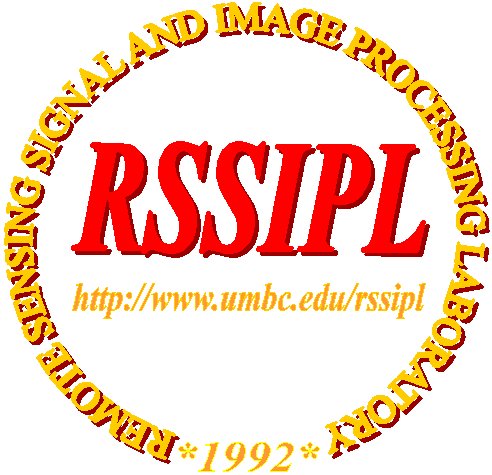Chemical/biological (CB) threat has recently become a pressing issue in homeland security. It poses a serious danger to human lives and creates immeasurable anxiety to the society. Therefore, an immediate need is to design and develop sensors and algorithms that are capable of detecting these events at the earliest stage. In remote chemical detection InfRared (IR) sensing generally provides a valuable method for the detection and identification of gaseous pollutants. In this research we develop a new evaluation tool, called 3D (3-dimensional) ROC (Receiver Operating Characteristic) analysis to analyze performance of a CB detection algorithm in terms of three parameters, detection power (PD), false alarm probability (PF) and CB agent concentration (a%) as opposed to the commonly used 2D ROC curve which is plotted only based on detection power, PD, versus false alarm probability, PF. The proposed 3D ROC analysis enables us to generate a 3D ROC curve of (PD,PF,a%) that can produce three different types of 2D ROC curves, the traditional 2D ROC curve of (PD,PF), a 2D curve of (PD,a%) and a 2D curve of (PF,a%). Interestingly, the latter two 2D ROC curves are function of CB agent concentration, a% that can be further used to evaluate performance of a detector responding various CB agent concentrations, a task that the classical 2D ROC curve cannot accomplish. Additionally, we also develop effective algorithms for automatic spectral CB agent recognition, i.e., non-literal automatic target recognition (NLATR). Many techniques will be investigated which include unsupervised target recognition (UTR), automatic target recognition (ATR), and anomaly detection. In order to take advantage of CB spectral characteristics for identification, three approaches are currently investigated which are binary coding for spectral signatures and progressive signature coding and Kalman filter-based methods. Using the coded signatures or Kalman filter-extracted spectral features we are able to establish spectral profiles of CB agents in a database for detection, discrimination and identification of a specific CB in accordance with its spectral properties. Finally, we investigate VLSI design for real-time implementation. The real-time processing capability allows an algorithm to perform CB detection in a timely manner to provide early warning of bio-attack. Over the past years, the Remote Sensing Signal and Image Processing Laboratory (RSSIPL) at the University of Maryland Baltimore County (UMBC) has been supported by various government agencies in designing and developing algorithms for hyperspectral data exploitation. Specifically, it has also established a working relationship with the US Army, Edgewood Chemical and Biological Center (ECBC) at Aberdeen Proving Ground to work on problems related to CB defense. Most recently, the PI with the RSSIPL has been involving a project with the Joint Service Agent Water Monitor Program (JSAWM) to develop image detection algorithms for tickets used in hand held assay for water monitoring.
Ph.D. Dissertation
- M.L.G. Althouse, Vapor Cloud Detection in Multispectral Infrared Image Sequences Using Co-occurrence Matrix Methods, Ph.D. Dissertation, Department of Electrical Engineering, University of Maryland, Baltimore County, MD, August 1994.
Ph.D. Dissertation in progress
- Jing Wang, Spectral Coding, Detection and Classification for Hyperspectral Imagery.
- Su Wang, Kalman Filter-Based Techniques for Spectral Singature Analysis for Chemical and Biological Defense.
Journal Publications
- M.L.G. Althouse and C.-I Chang, "Target detection in multispectral imagery using spectral co-occurrence matrix and entropy thresholding," Optical Engineering, vol. 34, pp. 2135-2148, July 1995.
- J.J. Pan and C.-I Chang, "Destriping of LANDSAT MSS Images by Filtering Techniques," Photogrammetric Engineering and Remote Sensing, vol. 58, no. 10, pp. 1417-1723, October 1992.
- M.L.G. Althouse and C.-I Chang, "Chemical vapor detection with a multispectral thermal imager," Optical Engineering, vol. 30, no. 11, pp. 1725-1733, July 1991. (invited paper)
- M.L.G. Althouse and C.-I Chang, "Target detection in multispectral imagery using spectral co-occurrence matrix and entropy thresholding," Optical Engineering, vol. 34, July, 1995, pp. 2135-2148.
Conference Publications
- A. J. Plaza, M. Hseuh, C.-I Chang, J. L. Jensen and J. O. Jensen, ˇ§Morphological algorithms for processing tickets by hand held assay,ˇ¨ OpticsEast, Chemical and Biological Standoff Detection II (OE120), Vol. 5584, Philadelphia, PA, Oct. 25-28, 2004.
- S. Wang, C.-I Chang, J. L. Jensen, and J. O. Jensen, ˇ§Spectral abundance fraction estimation of materials using Kalman filters,ˇ¨ OpticsEast, Chemical and Biological Standoff Detection II (OE120), Vol. 5584, Philadelphia, PA, Oct. 25-28, 2004.
- J. Wang, C.-I Chang, C.-C. Chang and C. Lin, ˇ§Binary coding for remotely sensed imager,ˇ§ 49th Annual Meeting, SPIE International Symposium on Optical Science and Techology, Imaging Spectrometry X (AM105), Denvor, CO, August 2-4, 2004.
- C.-I Chang, J. Wang, F. Dˇ¦Amico and J.O. Jensen, ˇ§Multistage pluse code modulation for progressive spectral signature coding,ˇ¨Chemical and Biological Standoff Detection - Optical Technologies for Industrial and Environmental Sensing Symposia - Photonics West 2003, pp. 252-261, 27-31 October, 2003.
- C.-I Chang, J. Wang and M.L.G. Althouse, "Vapor cloud detection using relative entropy thresholding," Proc. Signal Processing, Sensor Fusion and Target Recognition III, SPIE, Orlando, Florida, April, 1994.
- M.L.G. Althouse, J. Wang, C.-I Chang and J. Harsanyi, "Target detection in multispectral images using relative entropy thresholding," International Symposium on Spectral Sensing Research '94 (ISSSR), San Diego, July 10-15, 1994.
- M.L.G. Althouse and C.-I Chang, "Chemical vapor detection and mapping with a multispectral FLIR," Instrumentation for Measurement and Imaging of Air Emissions, SPIE, 1994.
- C.-I Chang, J. Wang and M.L.G. Althouse, "Chemical vapor cloud detection using multistage entropic thresholding," Proc. Scientific Conference on Chemical Defense Research, ERDEC, Aberdeen Proving Ground, MD, November 16-19, 1993.
- M.L.G. Althouse, C.-I Chang and D. Smith, "Single frame multispectral thermal imagery," Conference Proceedings SPIE, vol. 1689, Orlando, Florida, April, 1992, pp. 20-24.
- M.L.G. Althouse and C.-I Chang, "Chemical vapor detection and mapping with a multi-spectral thermal imager, " Proc. 4th Int. Symp. Protection Against Chemical Warfare Agents, Stockholm, June 1992, pp. 195-200.
- M.L.G. Althouse and C.-I Chang, "Chemical vapor detection with multispectral thermal imagery," Proc. International Symposium on Spectral Sensing Research (ISSSR), Kauai, Hawaii, Sep. 15-20, 1992.
- C.-I Chang and Y. Cheng and M.L.G. Althouse, "Chemical vapor detection using multistage predictive coding," Proc. Scientific Conference on Chemical Defense Research, CRDEC, Aberdeen Proving Ground, MD, Nov. 17-20, 1992, pp. 909-915.
- M.L. Althouse and C.-I Chang, "Chemical vapor detection with a multispectral thermal imager," Optical Engineering, vol. 30, no. 11, July 1991, pp. 1725-1733.
Any comment for this web is appreciated.
Webmaster

